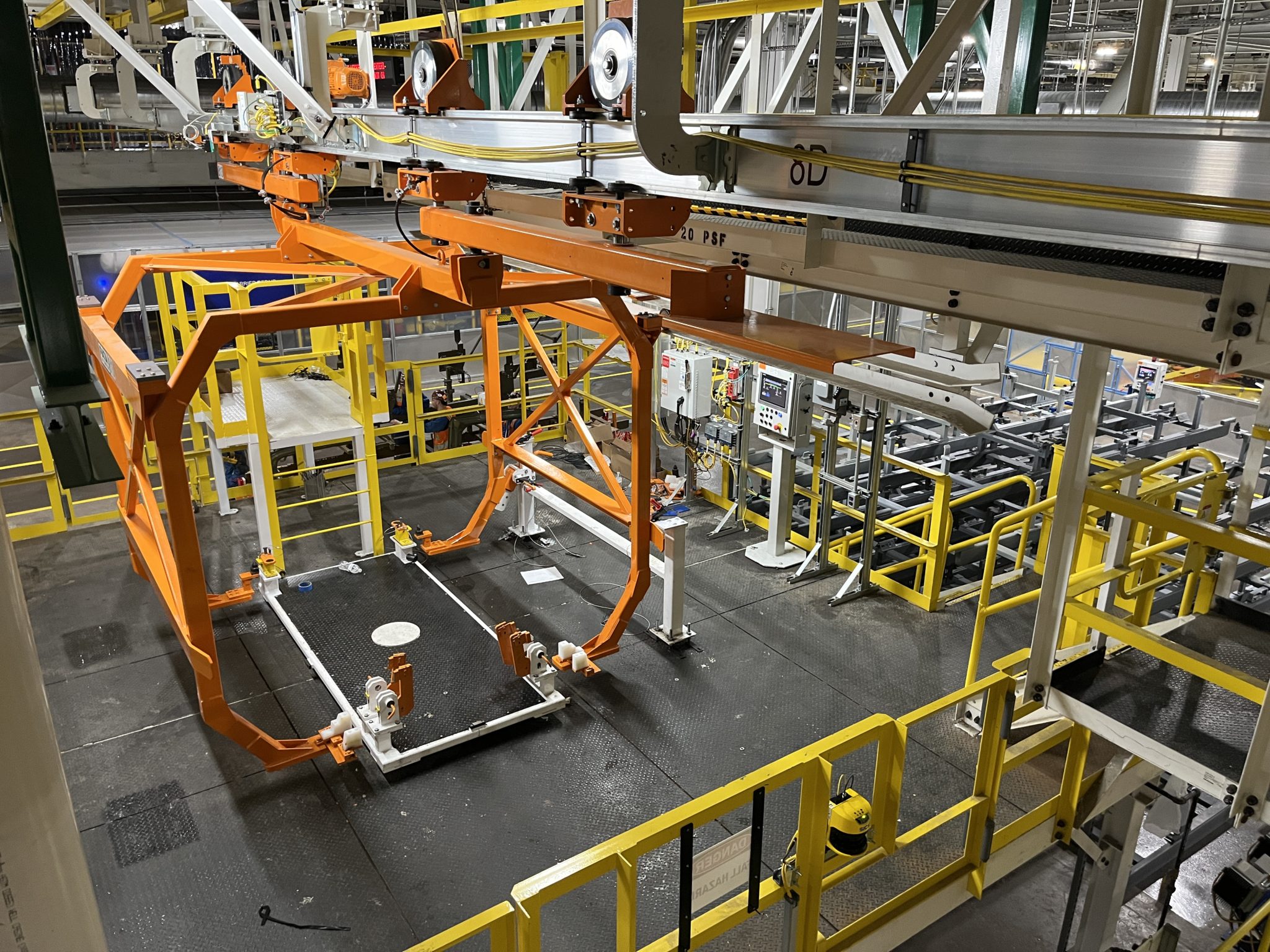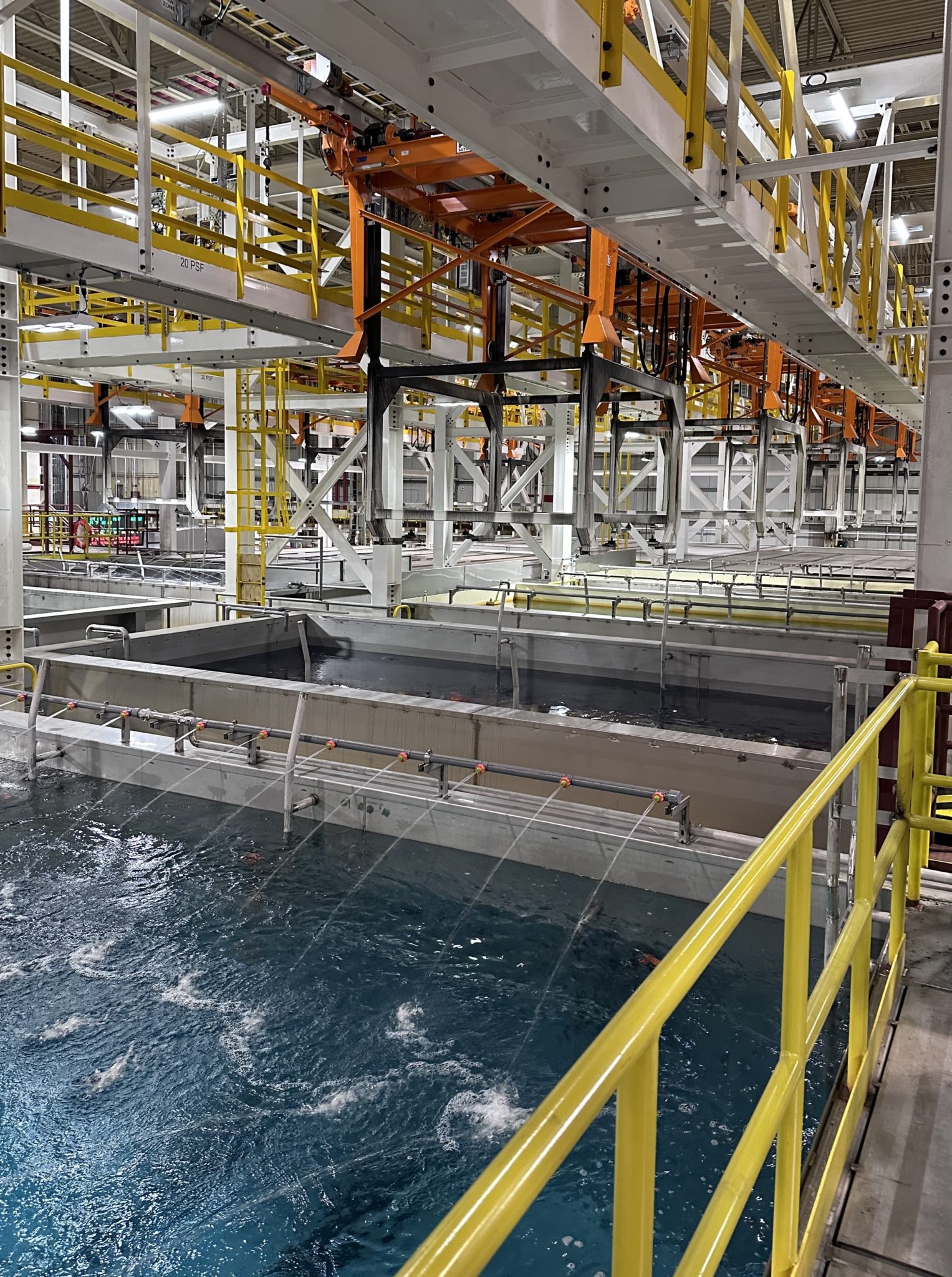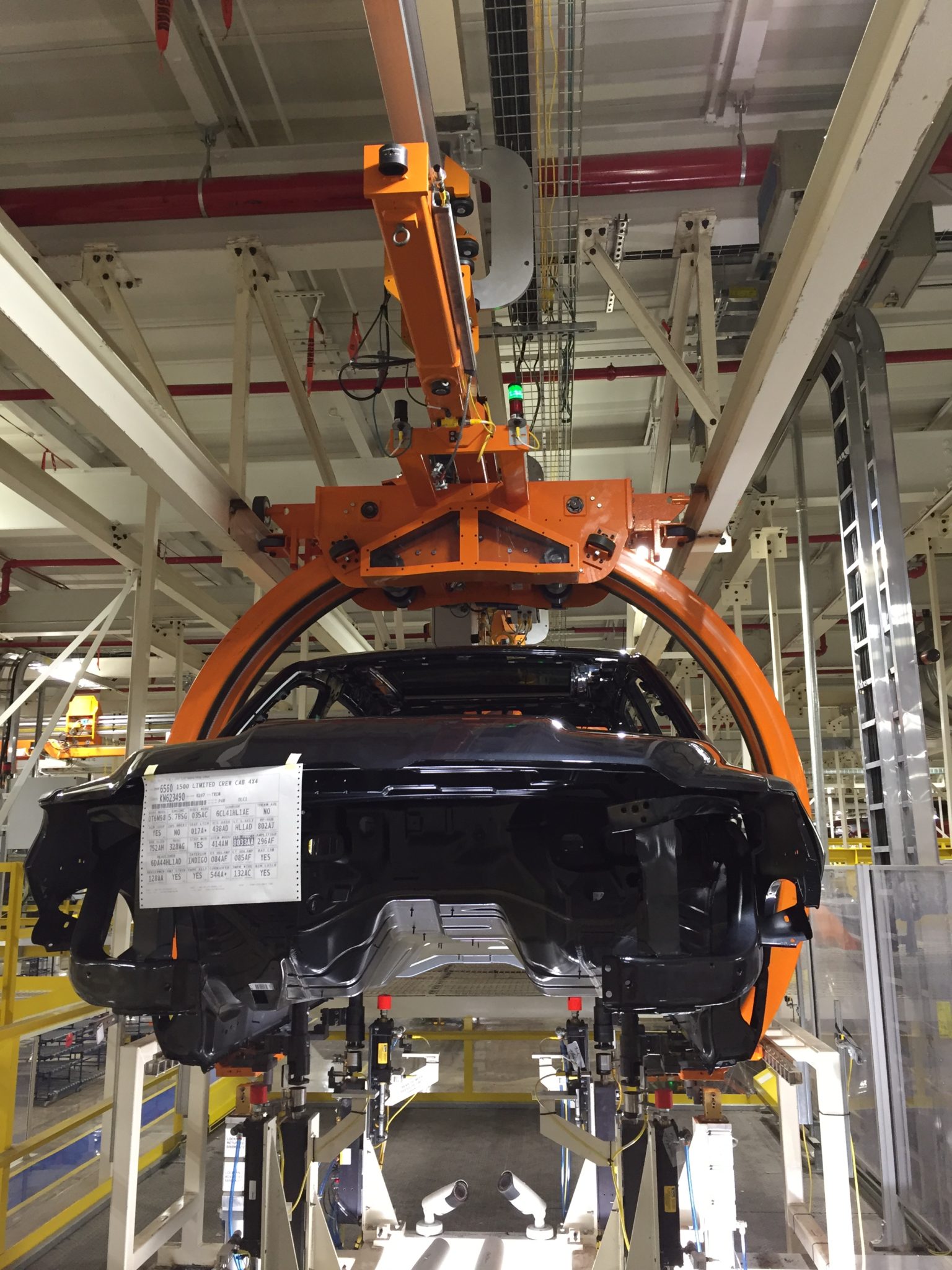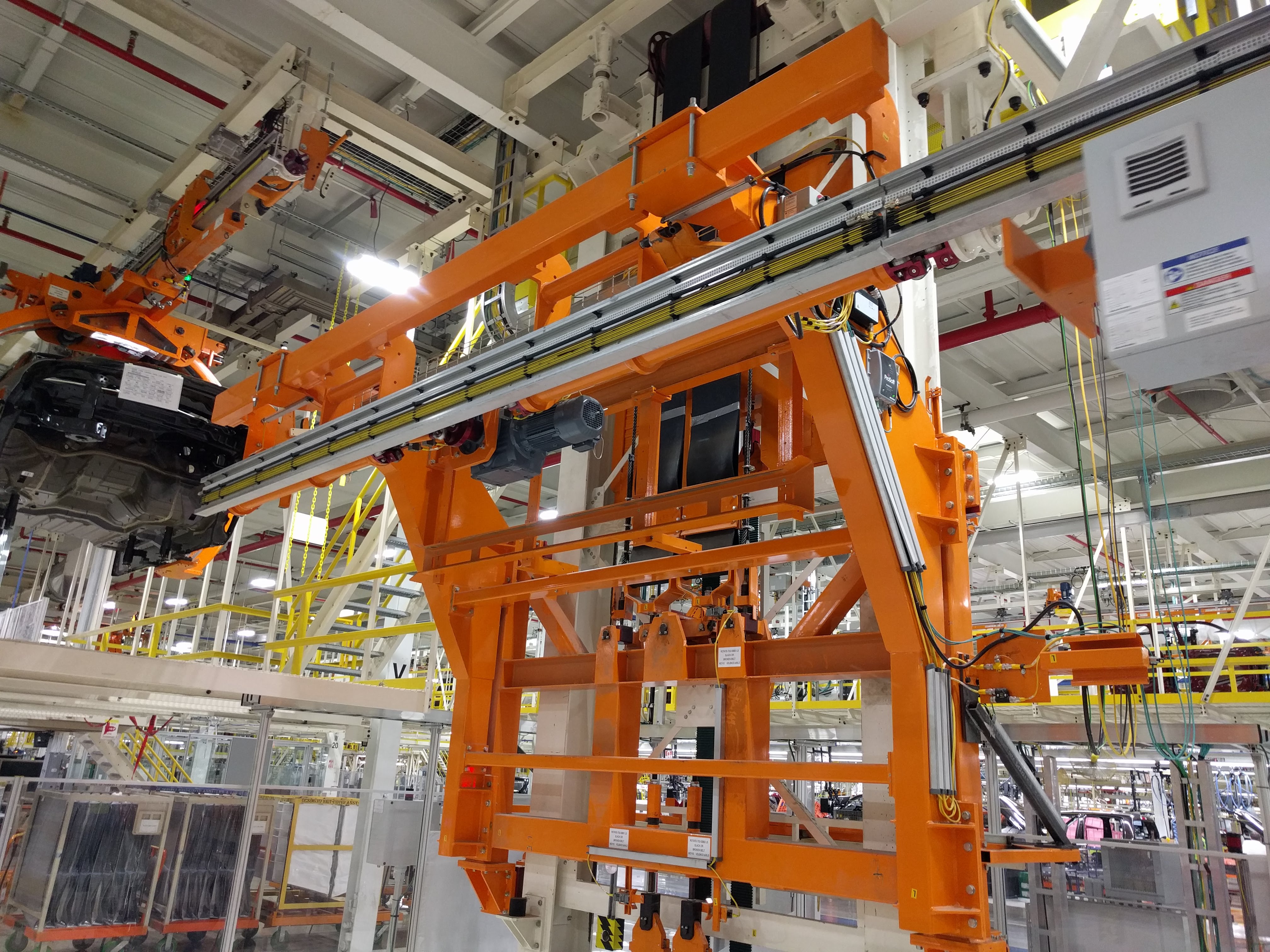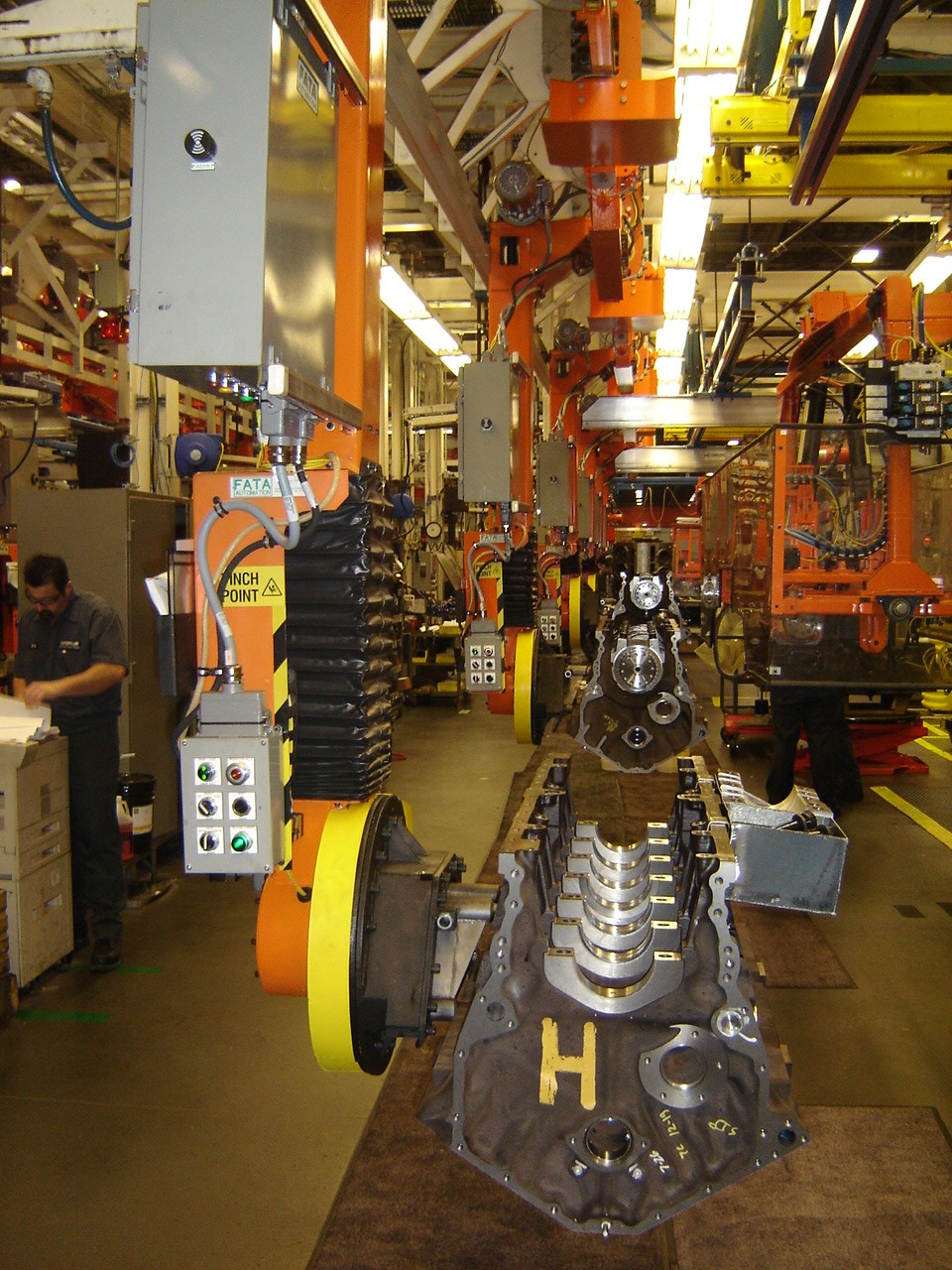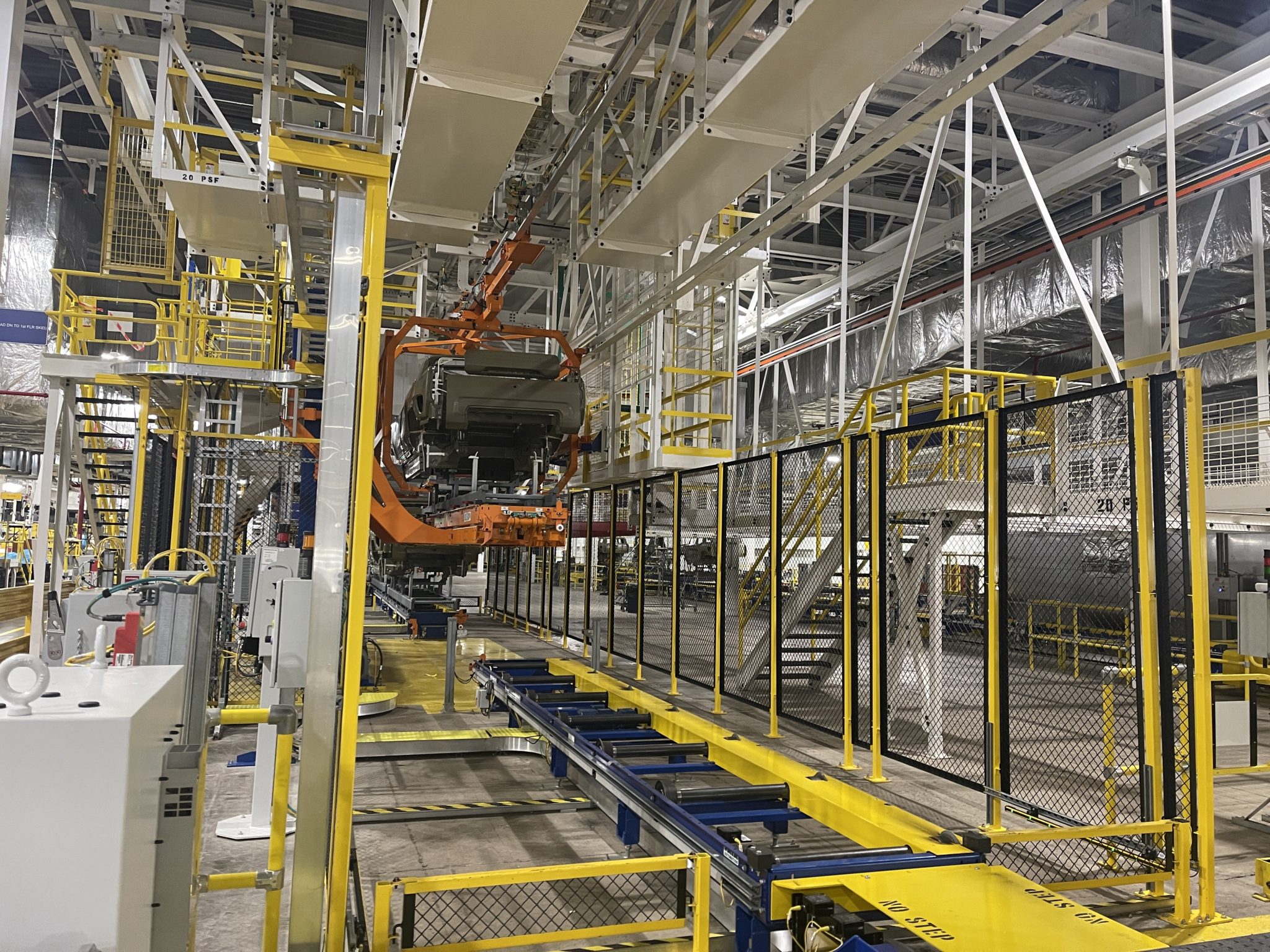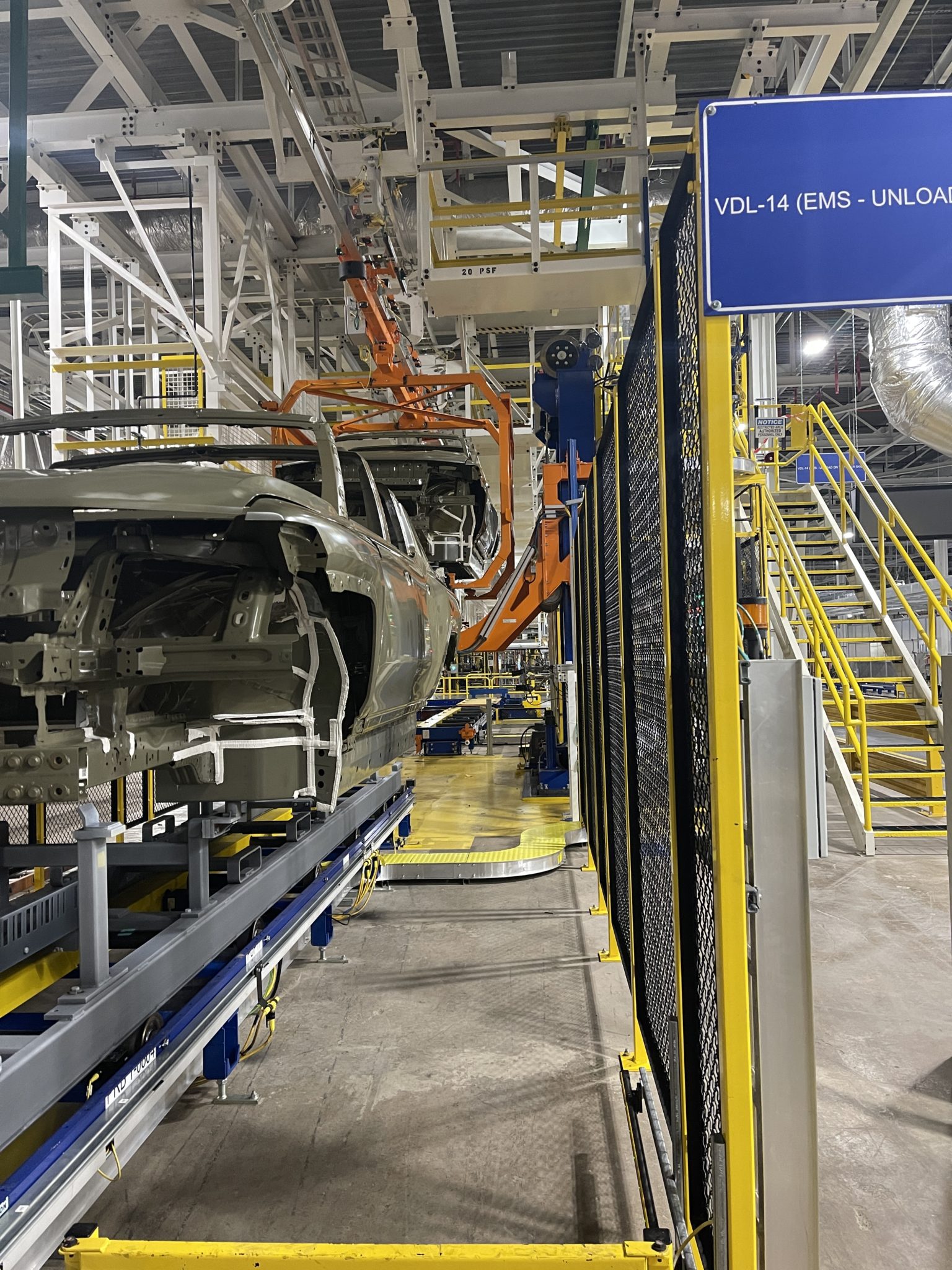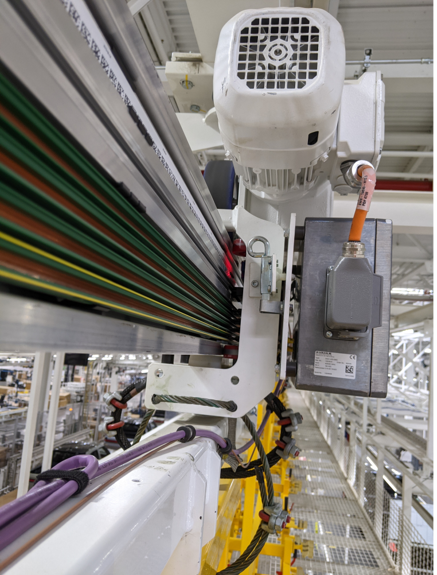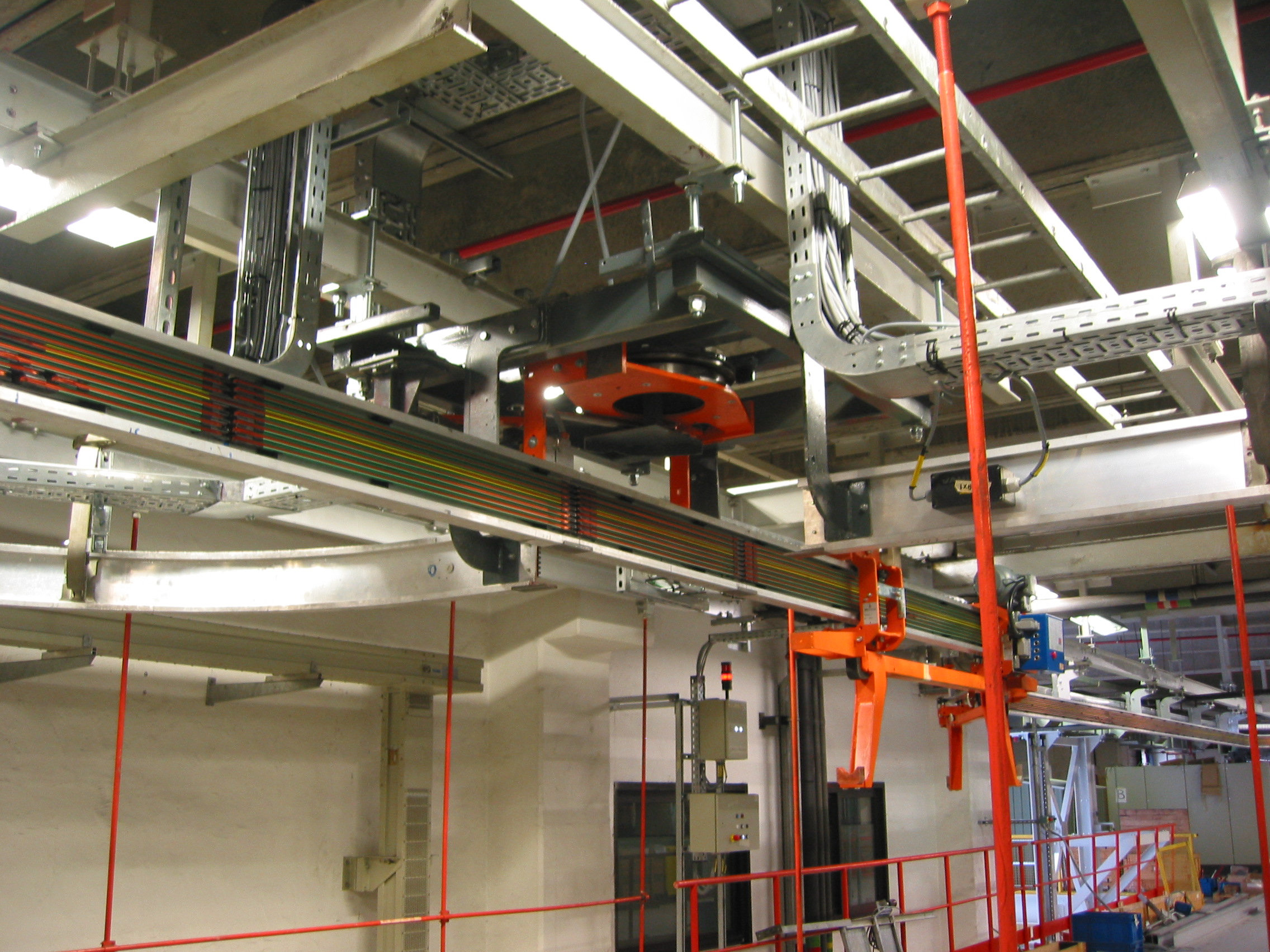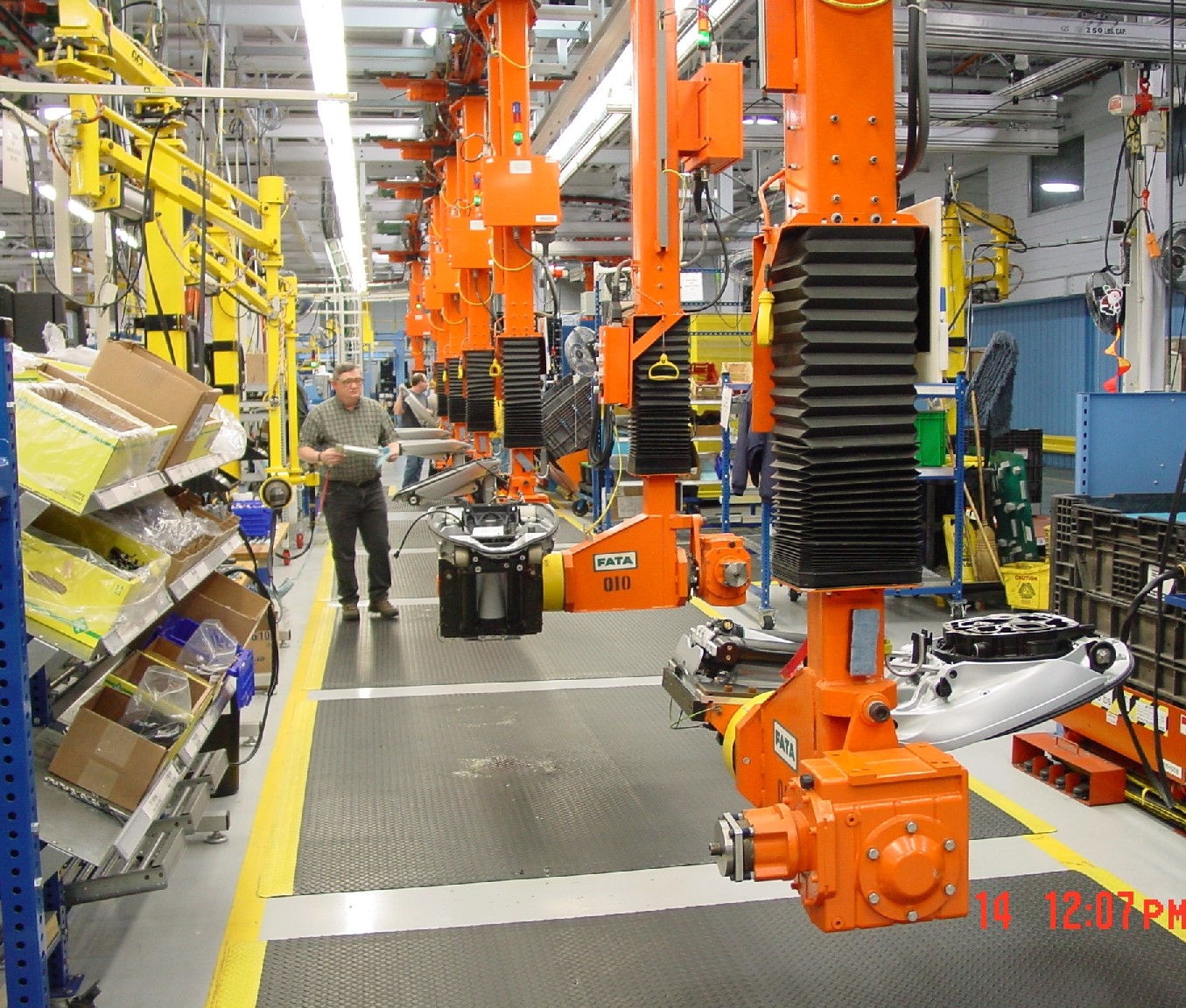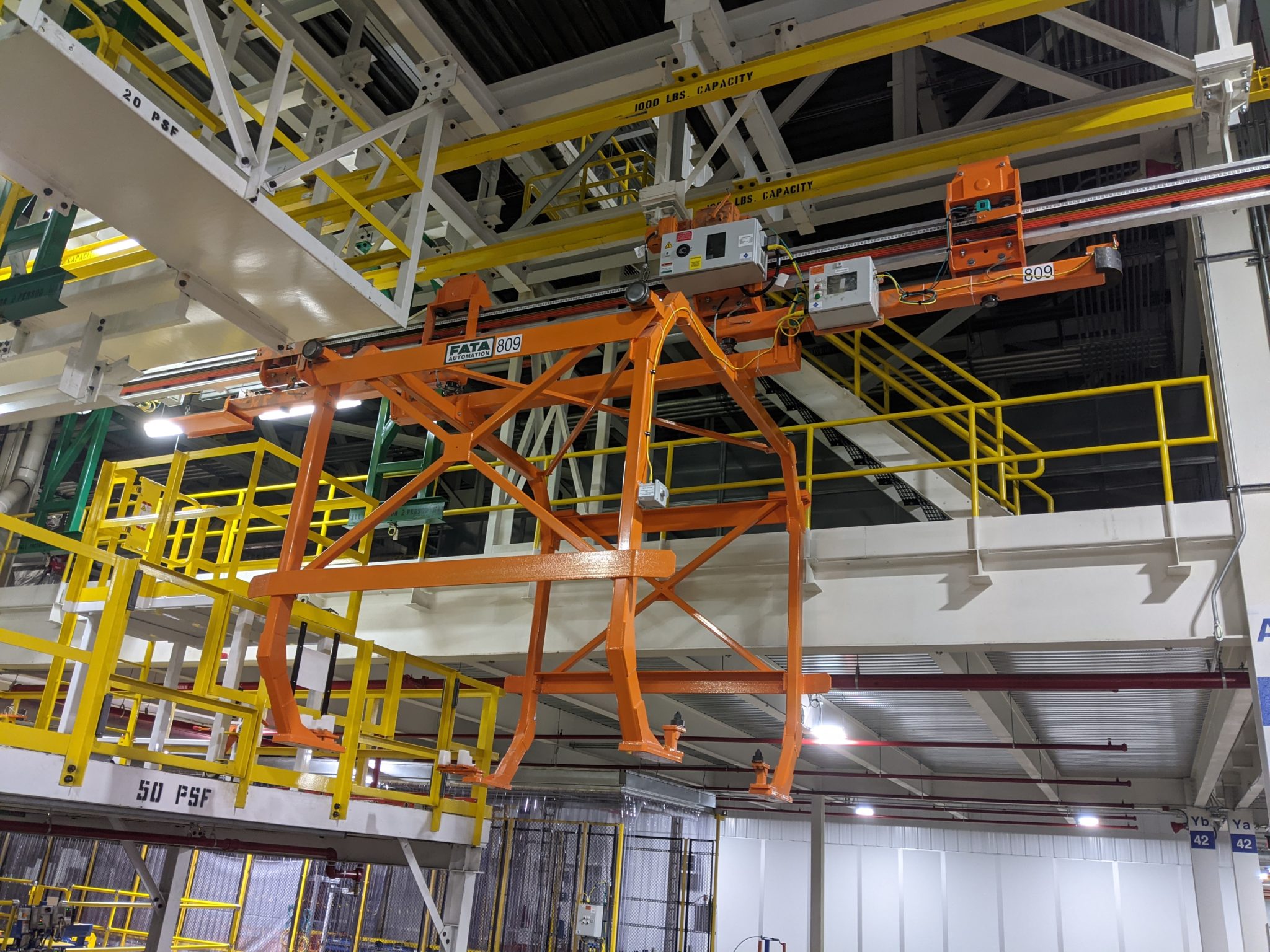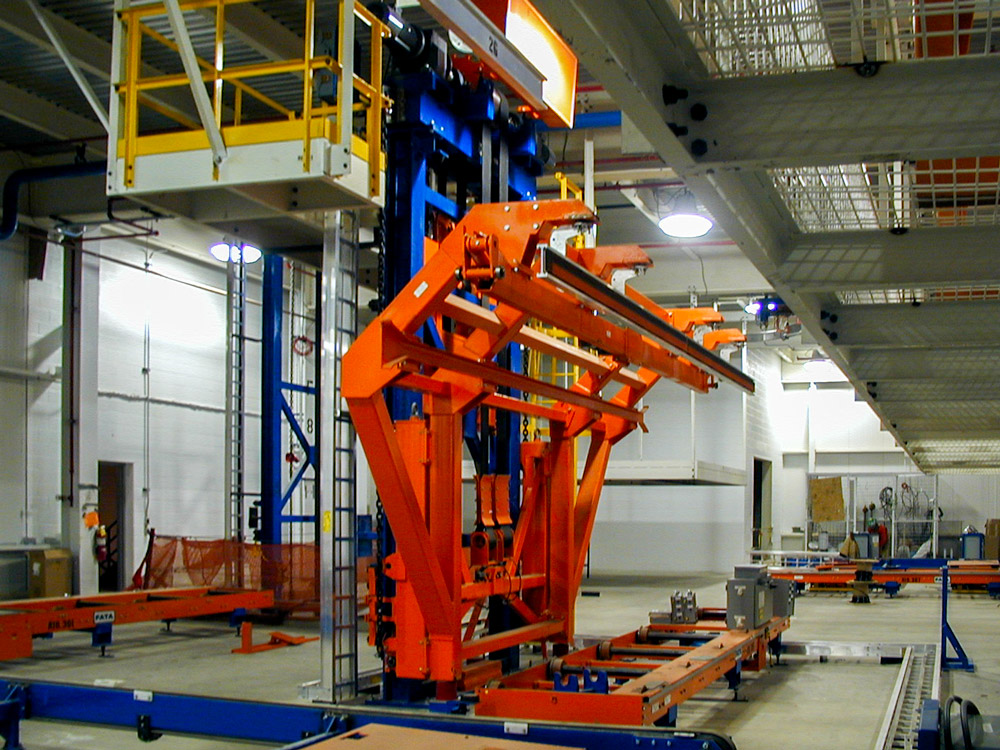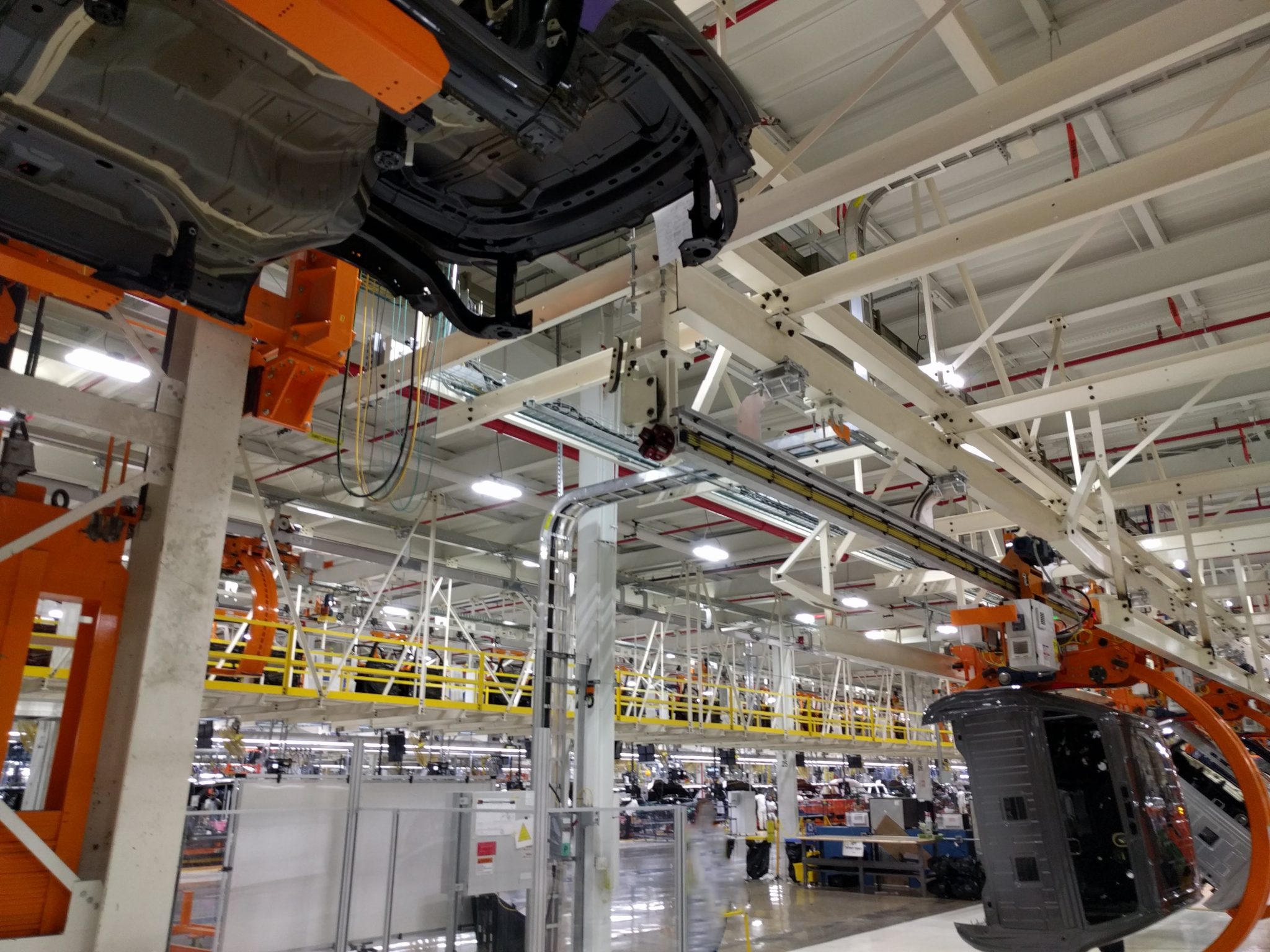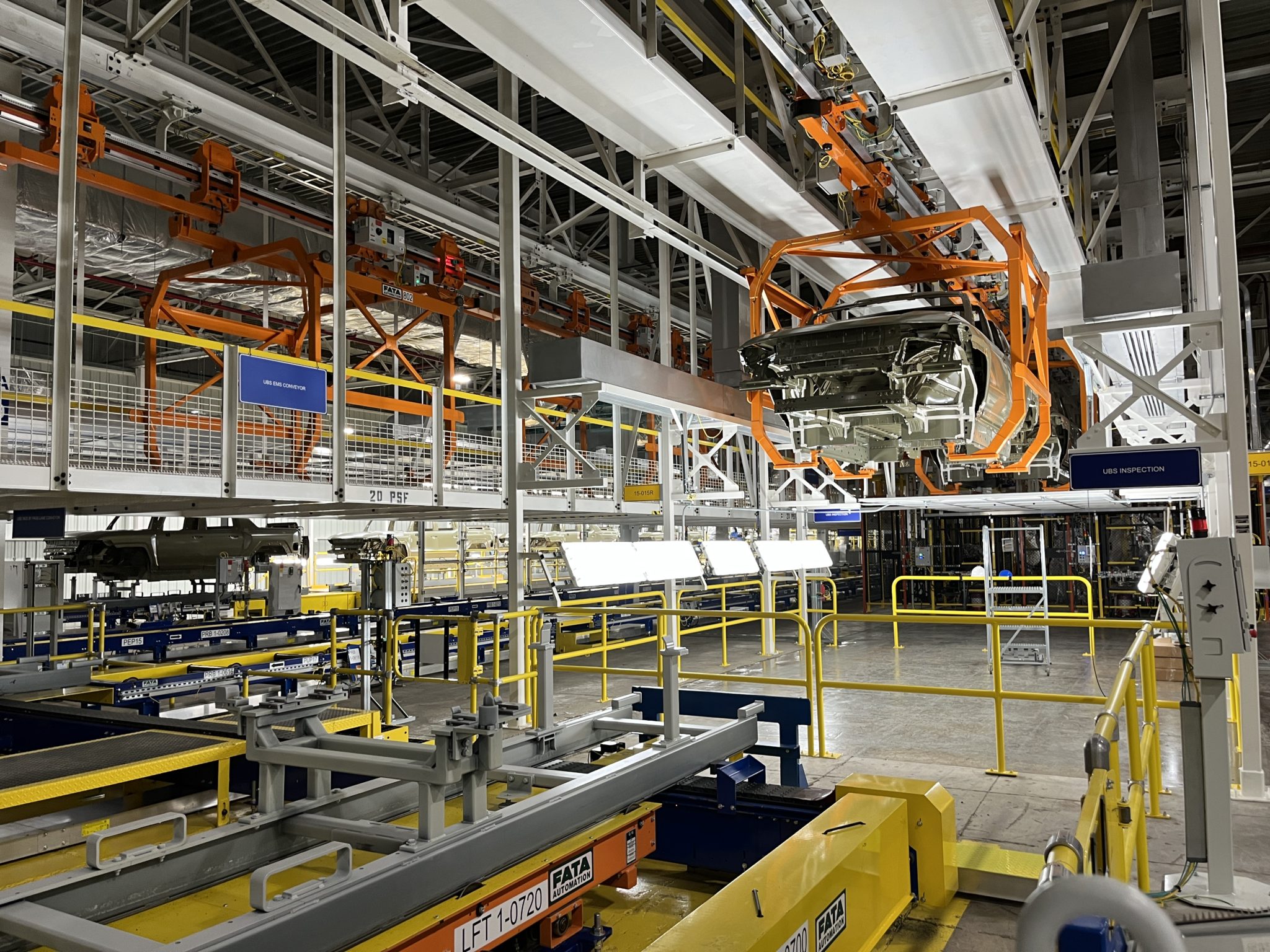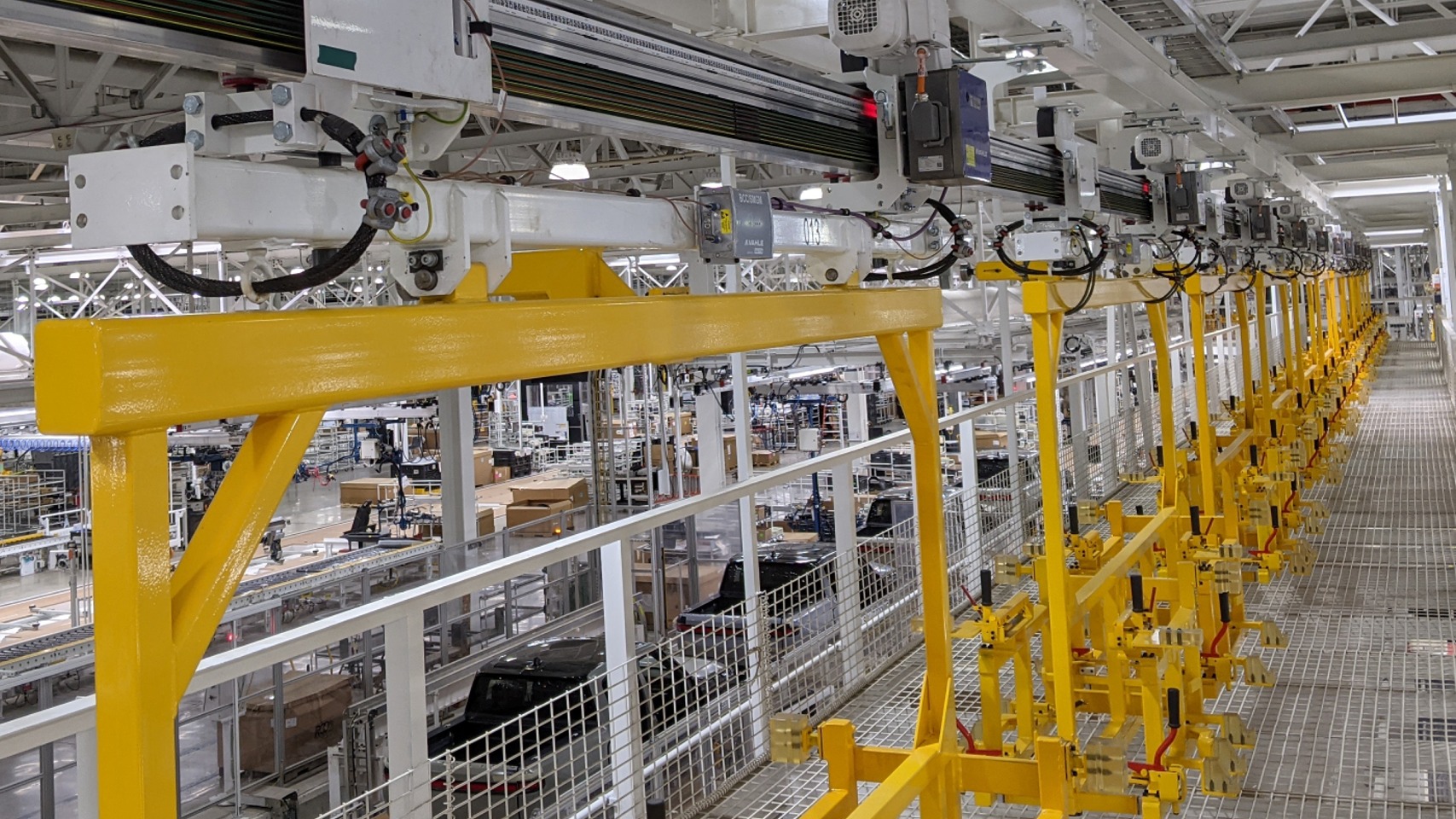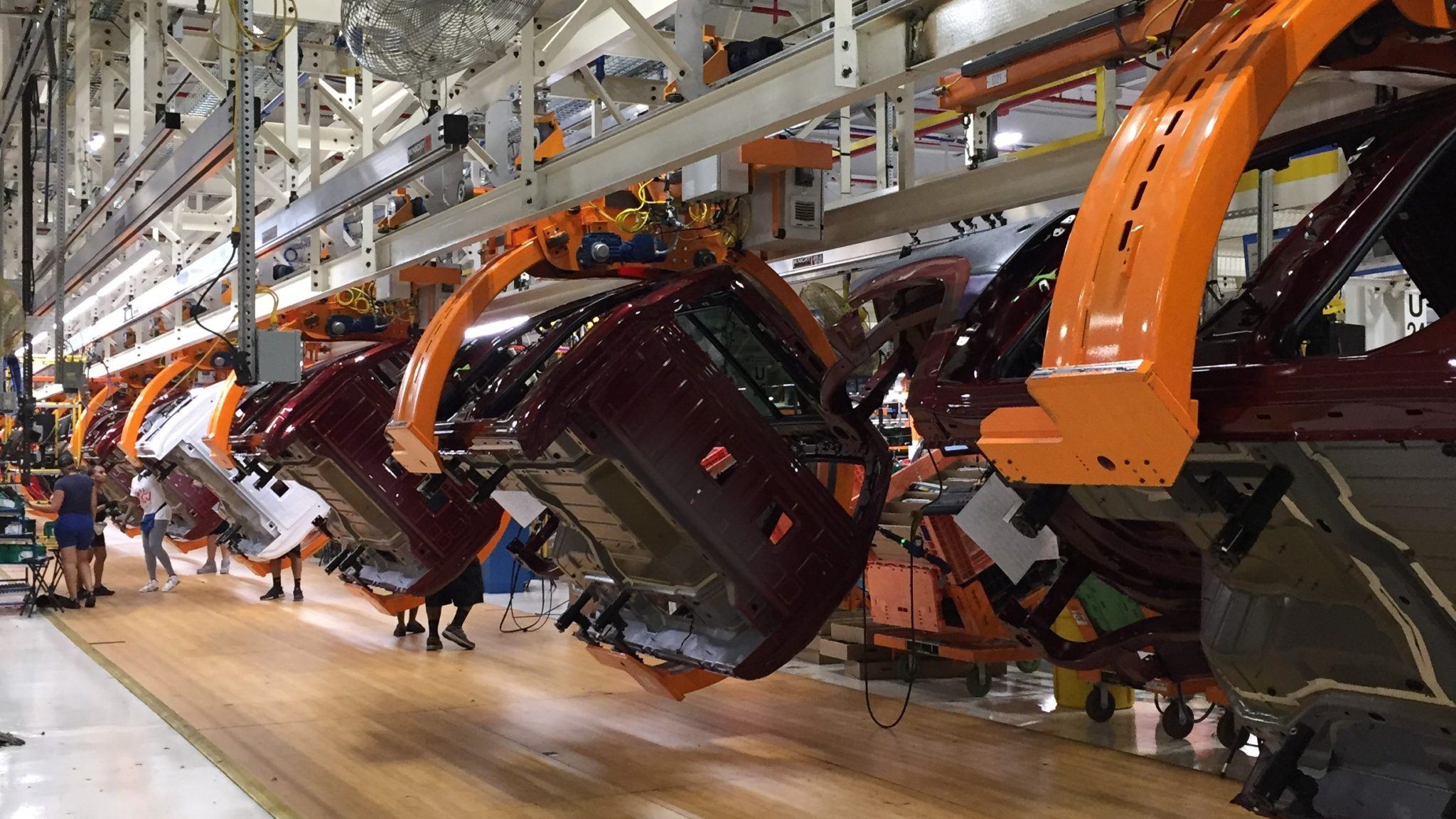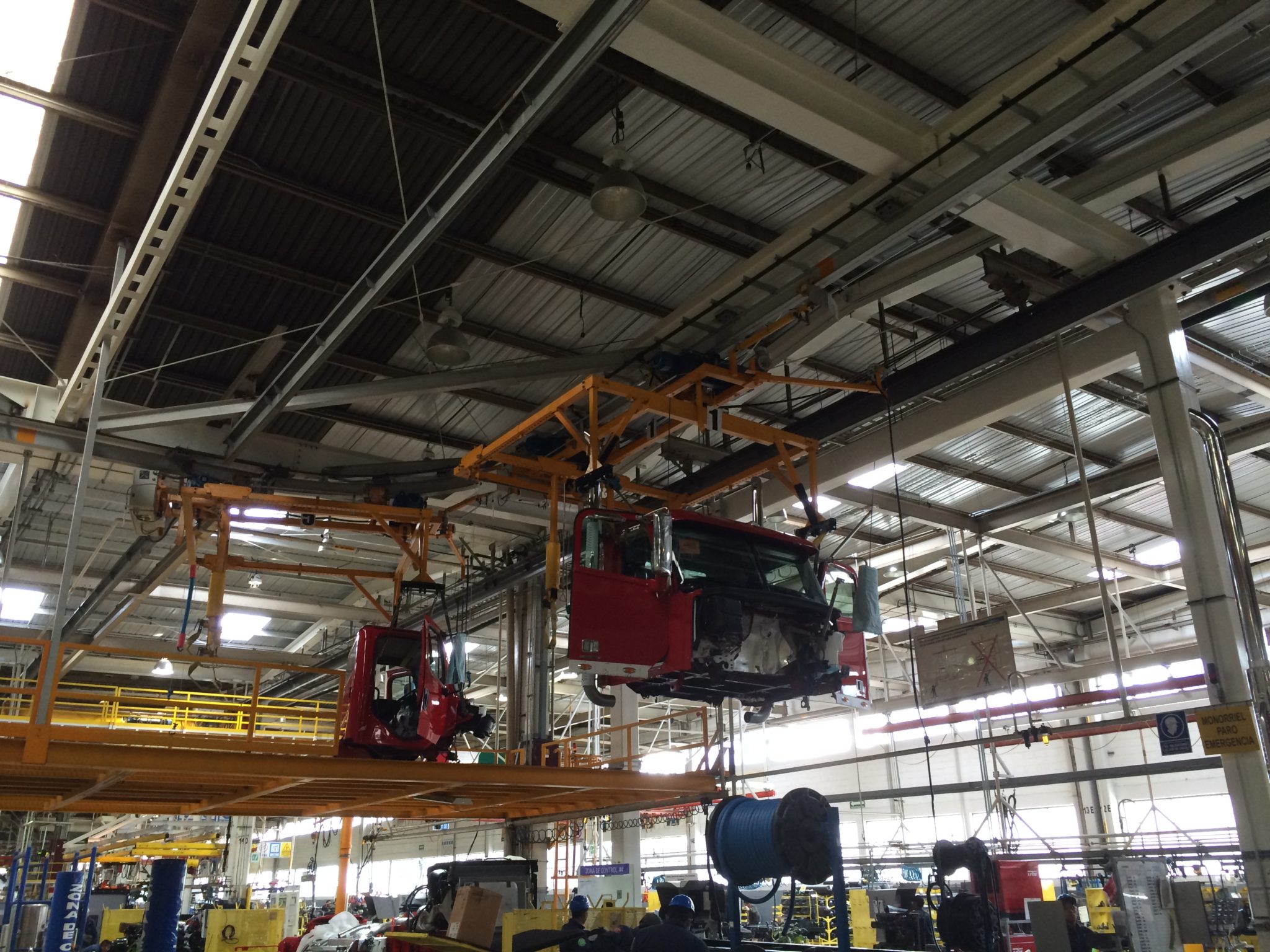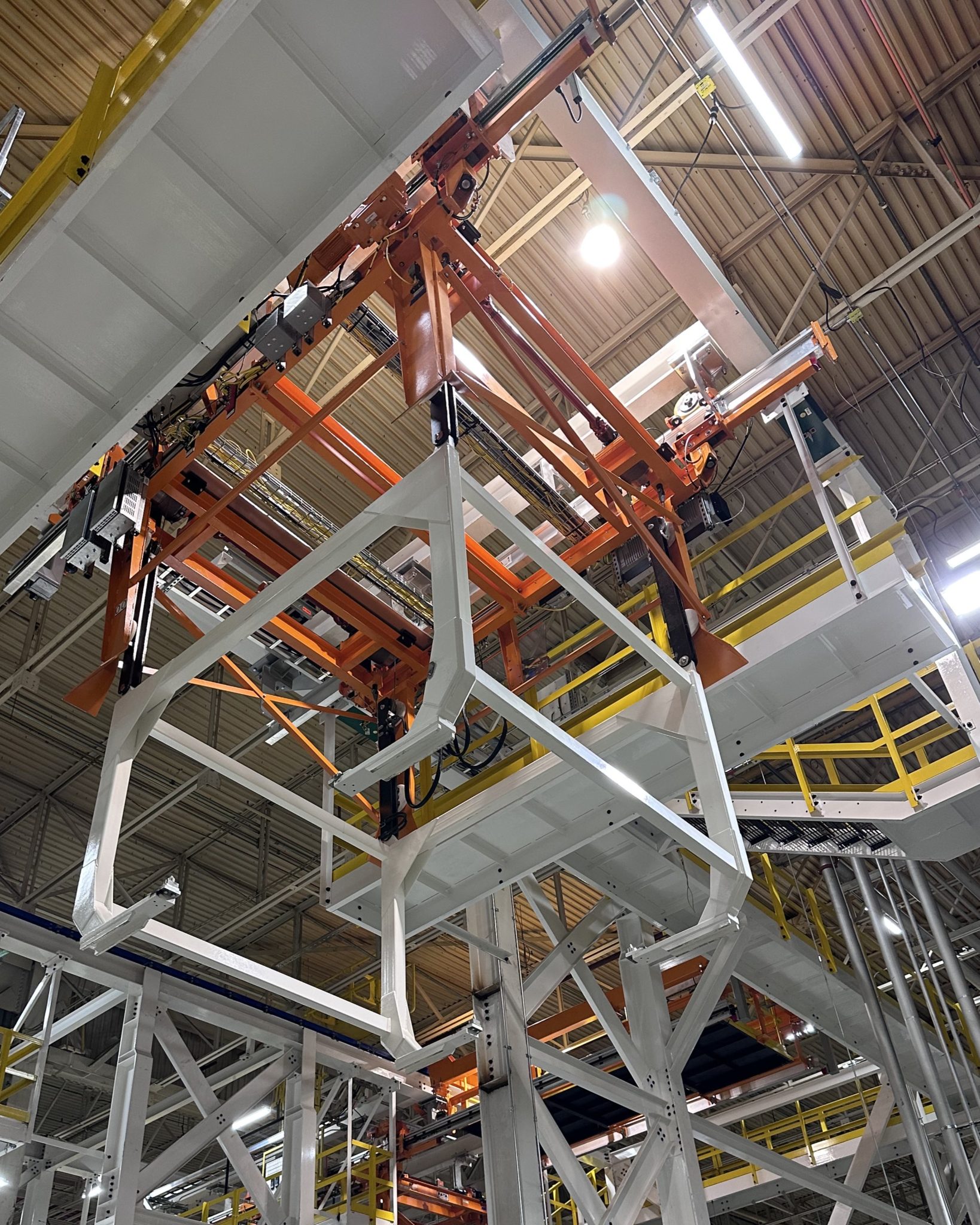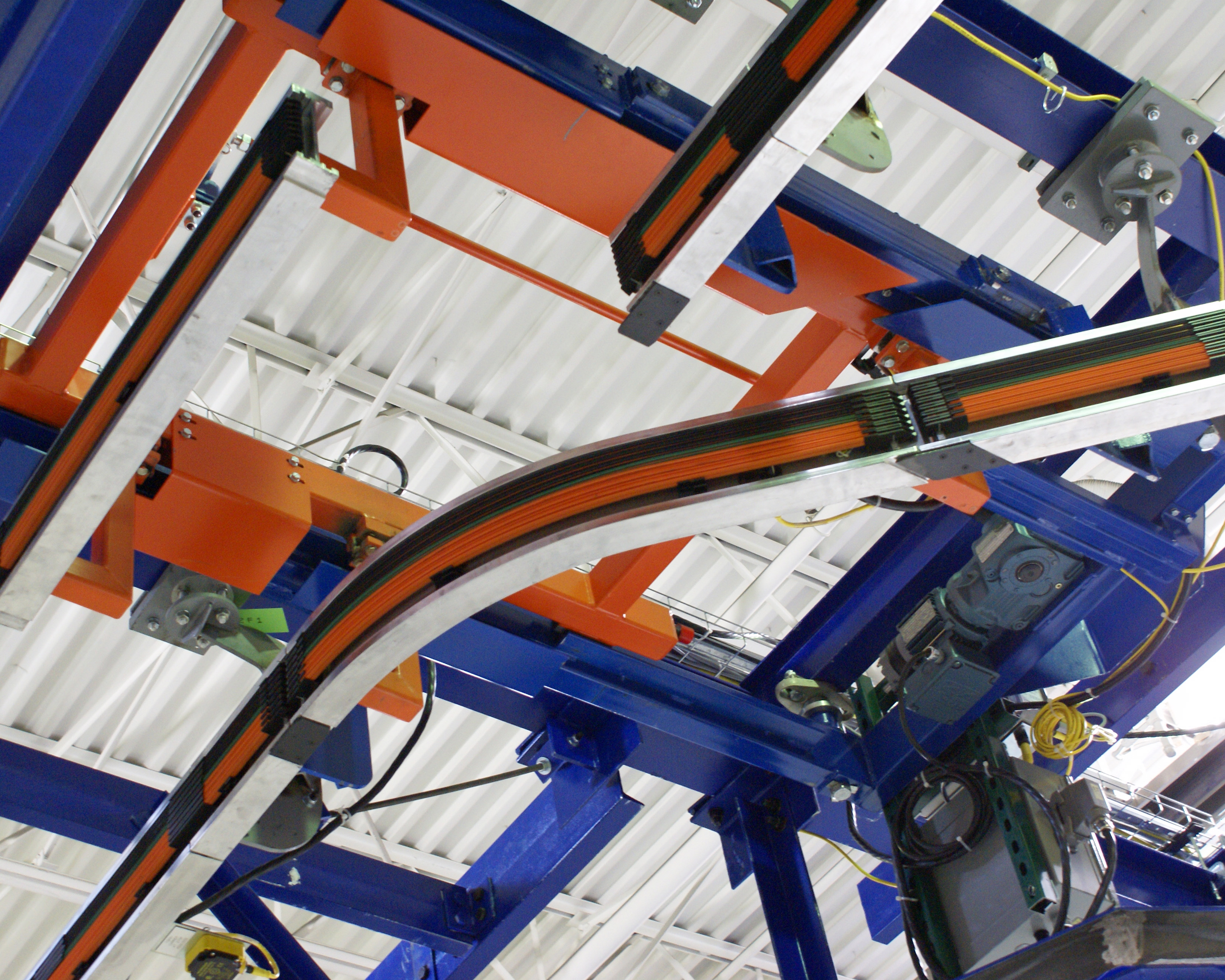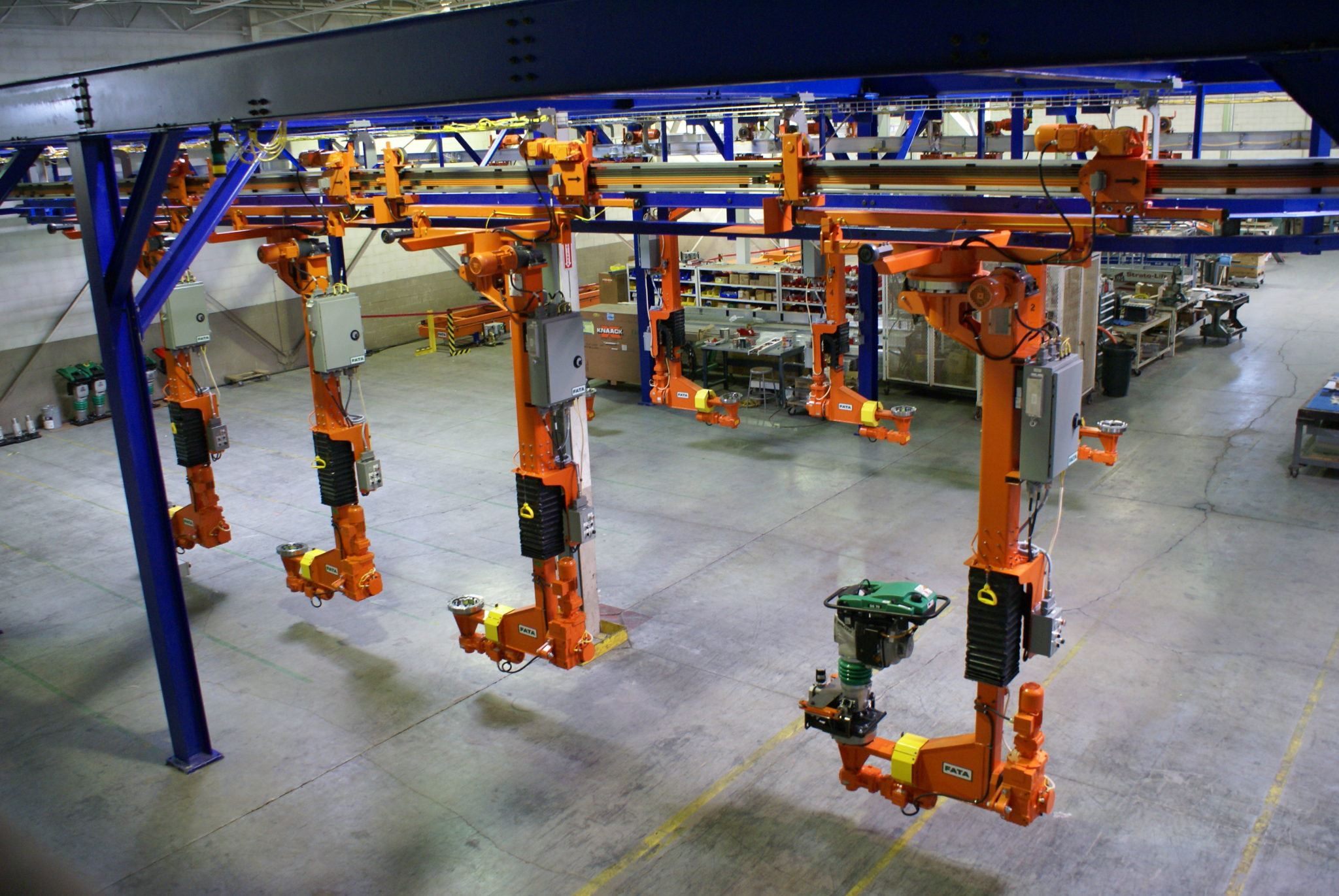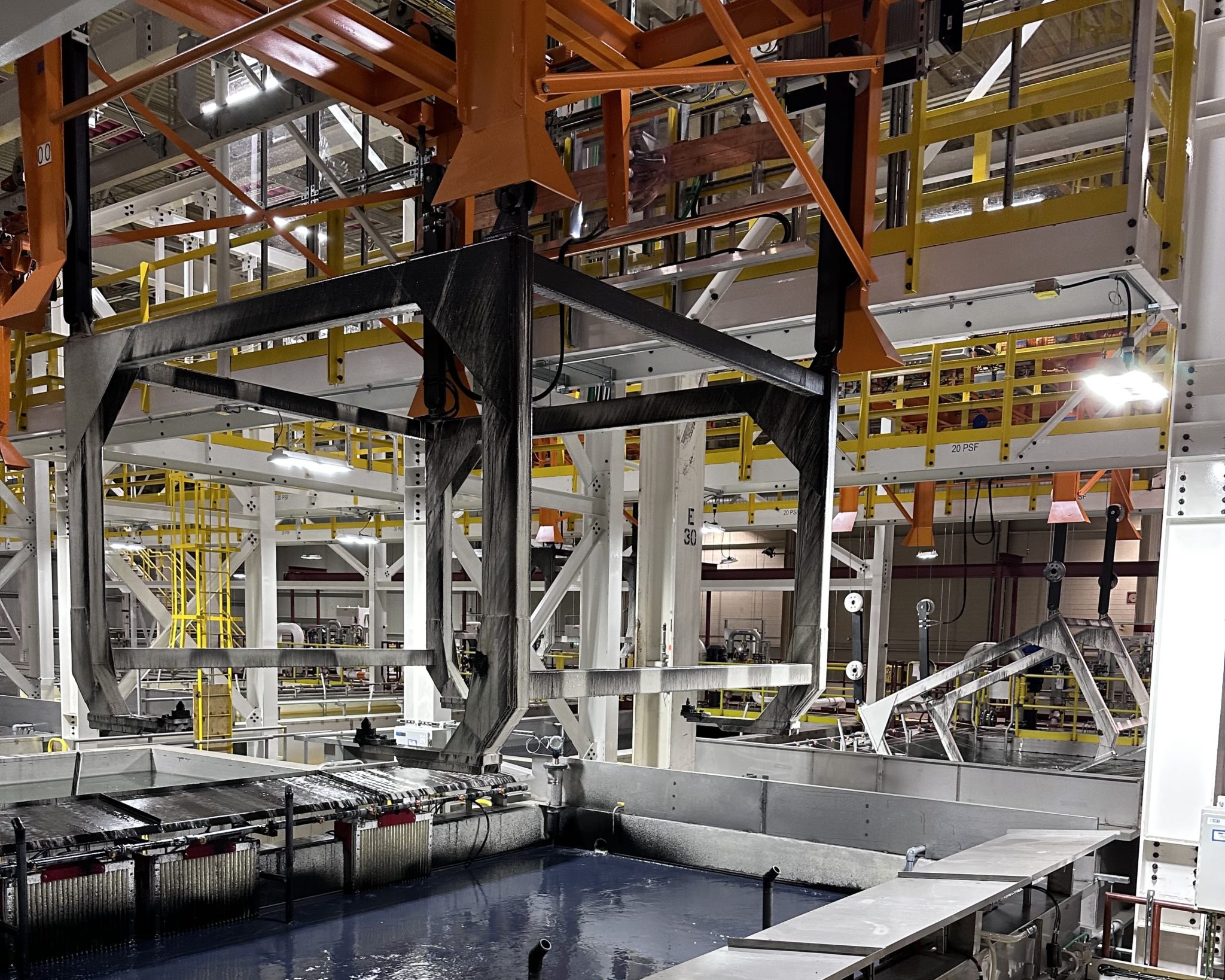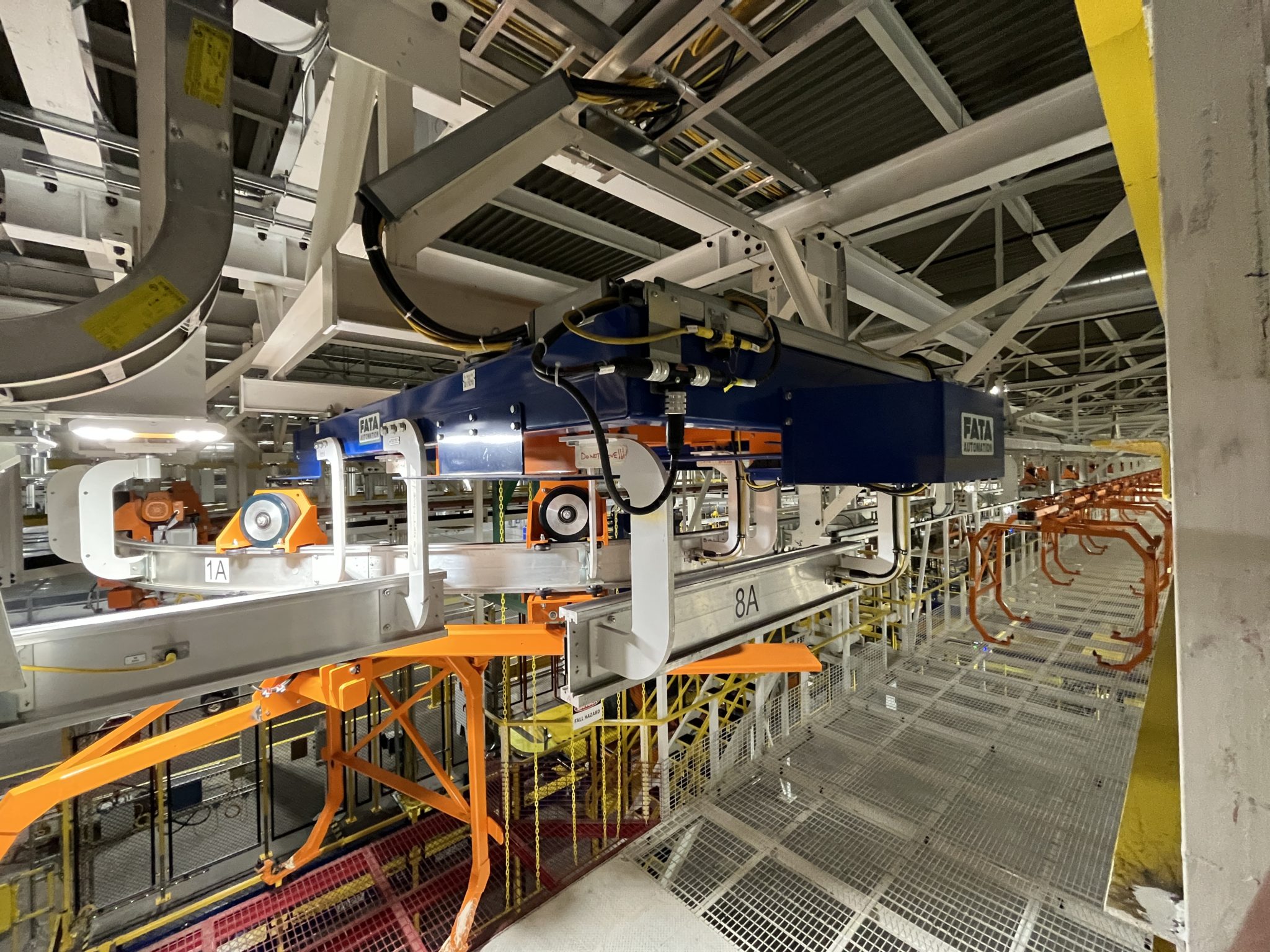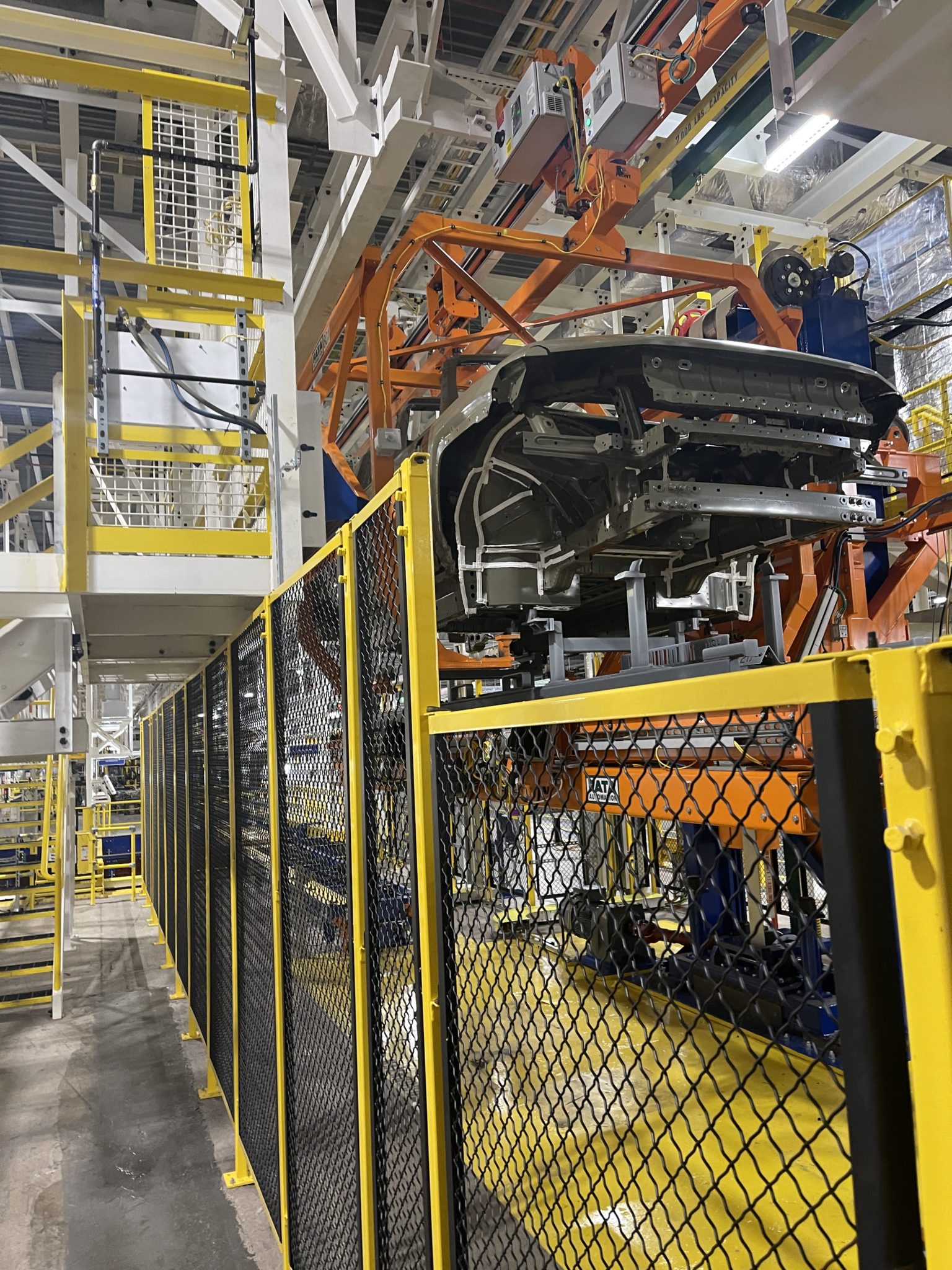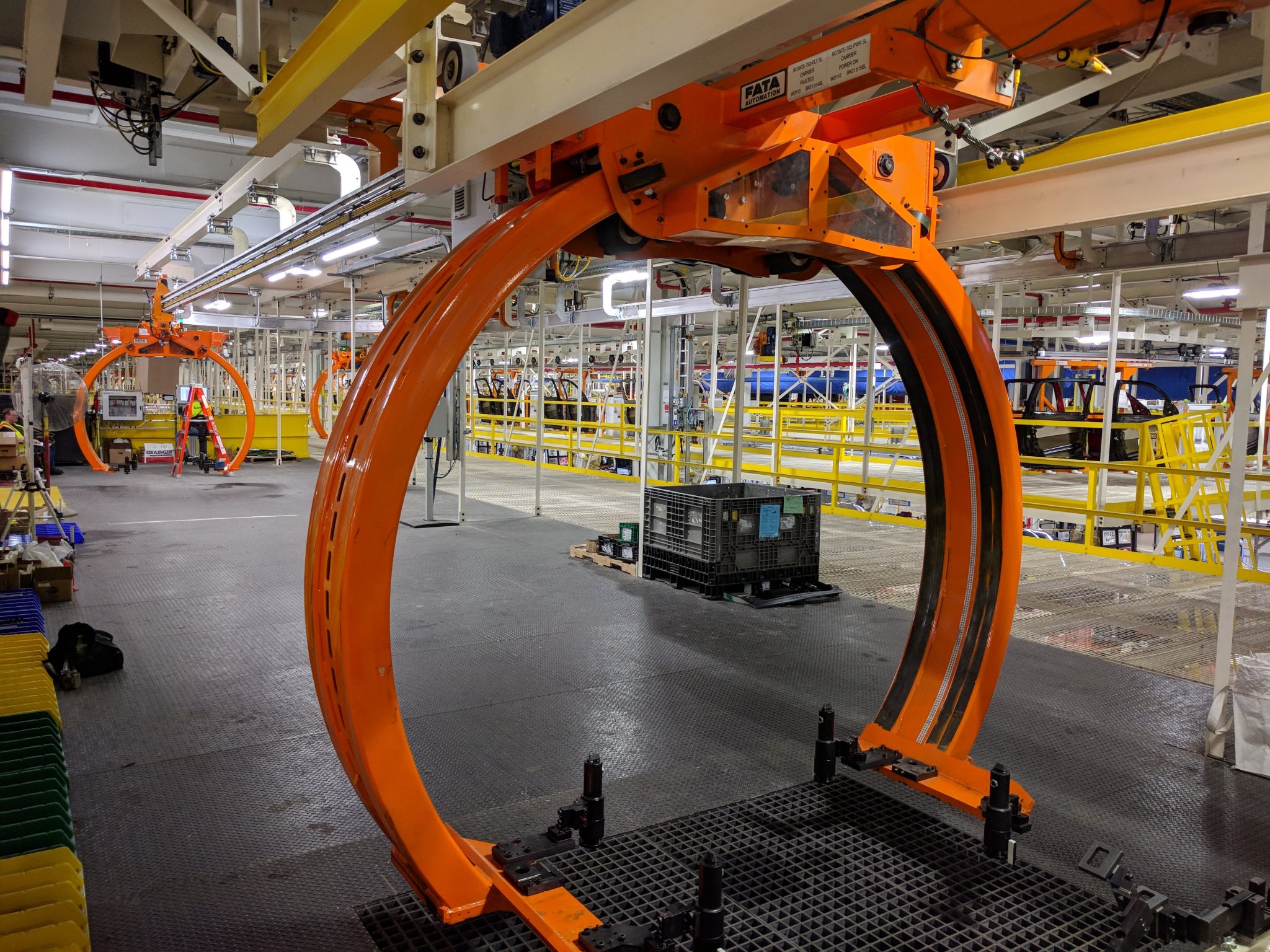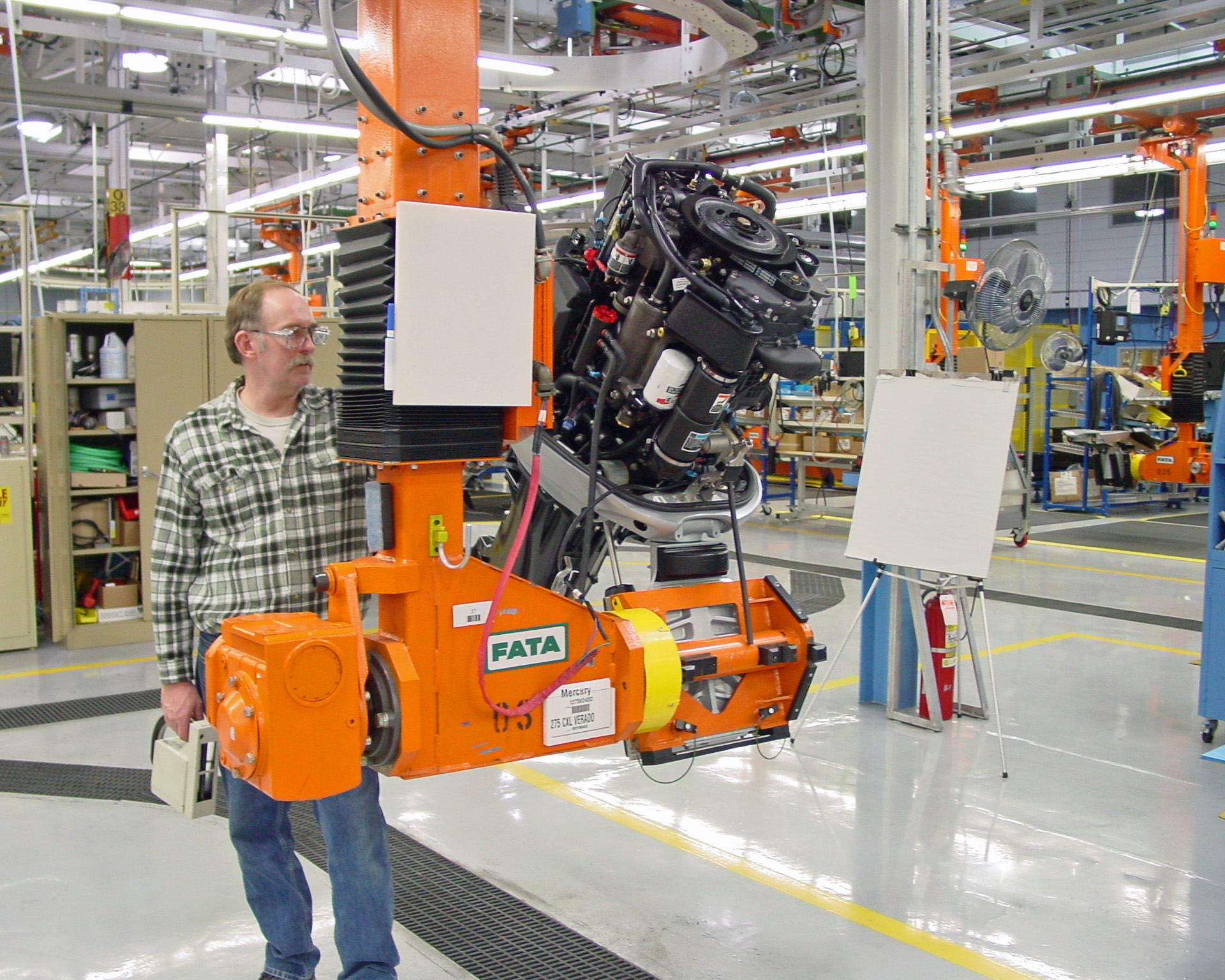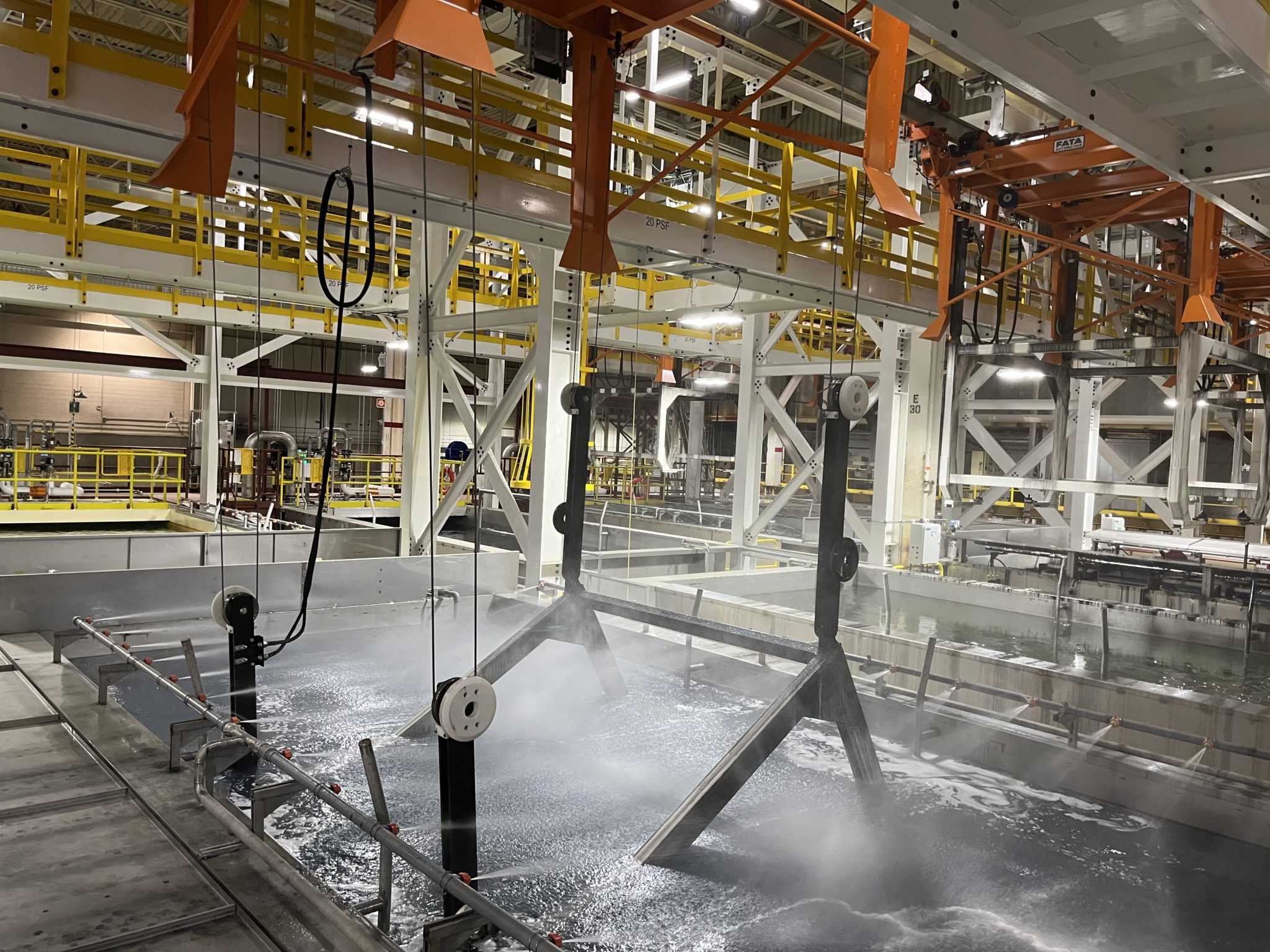Electrified Monorail Systems (EMS)
FATA Automation is a global leader in Electrified Monorail Systems (EMS) with installations dating back to 1978. FATA has over 200 EMS installations totaling over 100 miles of track in a variety of applications such as delivery, production areas and automated processes (i.e. BIW welding lines).
FATA has 2 standard Electrified Monorail Systems to choose from based on the weight requirements:
- L/M60 (180mm x 60mm Rail) = 500kg (1100 lbs.) /trolley capacity, with 4 trolleys =2000kg (4400 lbs.)
- P60 (240mm x 80mm Rail) = 1500kg (3300 lbs.) /trolley capacity, with 4 trolleys =6000kg (12000 lbs.)
- Custom engineered designs are available for unique applications and special heavy loads.
FATA offers two types of EMS Control System Methods (Standard and Lean).
FATA Standard methods are designed with off-board and on-board PLC controls. FATA Lean EMS is a FATA Patented (#9139207) Modular Rail Bus Controlled System with only off-board PLC controls.
FATA Standard EMS
FATA’s Standard EMS systems are supplied with (2) different control philosophy. The first method is a simple proximity switch and rail cut technology that provides signals to sense carrier presence to the system’s main PLC to start and stop the carrier (signals/ communication protocol are hardwired to the main PLC). The second method adds more sophisticated technology using encoded rail or bar code on the EMS track and RF communications to the system’s main PLC. In this method the main PLC knows where the carriers are in the system and stops a carrier at programmed locations derived from the encoded rail. Both methods require electronics with PLC logic on-board the carrier, communications protocols (RF) back to a main PLC that would direct traffic of the system is also available.
FATA Lean EMS – FATA Patented Modular Rail Bus Controlled EMS
The main principle of this design is controlling track segments on which the tractor drives the trolley around the rails, thus eliminating the need for an on-board PLC trolley control box. The track is designed as a module with any distributed control motor starters with DNET, ENET or similar communication method, as directed by the facility, carrier enter and stop switch, cords and trunk cables. The Armorstart motor starter controlled from the off board main PLC/PDP set provides power and control to the track that drives the tractor and starts and stops the carrier from the condition of the entering and exiting track segment’s enter and stop switch. The control of the track is modular and emulates a skid conveyor system simplifying the programming of the EMS system.
The goal was to produce a “known and proven” product that could be adopted as a standard which would result in significant savings in project planning, manpower, costs and lead time. In addition, FATA Lean EMS offers a great alternative to Power &Free and Friction Drive conveyors.
EMS Carrier
An EMS system is an overhead electrified monorail conveyance conveyor that is typically mounted on building trusses or column supported structure consisting of individual motorized carriers that move independently throughout a system that can be diverted, and converged to various paths by conveyor track switches.
The EMS carrier has a self-contained motorized trolley called a tractor or drive trolley which drives the trolley around rails. The rails are made from high strength extruded aluminum and are supported by yokes that connect to the system support steel. The tractor can be used in single application or can be connected to a combination of idle trolleys typically 2-4 trolleys. A load bar(s) connects the trolleys to the various combinations to what is called a tractor assembly. The tractor assembly load bar(s) has a pivot unit assembly that connects the tractor assembly to the carrier. Carriers are specifically designed for the application and per the customer’s requirements.
Power and control signals are delivered to the carriers through a brush/ conductor bus rail system that is integral to the aluminum track. Most common system power requirement is 480 VAC 3-phase. EMS systems can also, be design with 208 VAC 3-phase using a step down transformer from 480 VAC.
Advantages of EMS Include:
- Wide Range of Speeds
- Quiet Operation
- High Flexibility
- Low Maintenance
- Clean
- Energy Efficient
- Modular Design (FATA Lean EMS)
Standard EMS Products Include:
- Decline Safety Conveyor – Used in delivery systems to prevent carrier runaway conditions where workers are present.
- Production Chain Assists – Used in production build lines to maintain a constant speed and distance between jobs.
- Positioners – Used to accurately position a carrier in automated processes such as lowering a carrier with part onto a fixture or to transfer part off of the carrier and onto another conveyance system.
- Switches – Track, Shuttle & Cross– These products can be used in all aspects of an EMS system. A track switch changes the carrier’s path by diverting and/or merging paths. Shuttles transfer carriers to multiple parallel lanes. A cross switch is as an intersection when a carrier must cross another path.
- Vertical Chain Assists – Used in delivery systems to assist carrier travel vertically up curves.
- Vertical Drop Lift – Used to transfer a carrier from one elevation to another.
- Vertical Lift Stations – Used in automated processes to lower the carrier w/ part onto a fixture. Typically used in welding applications.
- De-clutch/ Clutch Device (Thumper Assembly) – Used in-conjunction with production chain assists to de-clutch the carrier’s motor/gearbox allowing the production chain to convey the carrier at slow production speeds.
Product Spotlight Video


